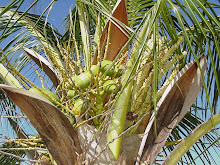The Colonel and I now own the house that once was his mother and father's. Upon his mother's death, the house became ours.
We have been making a few changes around the "new" homestead. We had one wall in the family room covered in ship lap. We will eventually have it painted white (I know it is white now but that is just the primer). We have also repainted the front bedroom and hallway bathroom (both in the gray family). I painted the formally brown front door a pretty, mossy blue-green called "Dragonfly".
Furniture-wise, we changed the top of the dinning room table. We bought a butcher block counter top piece from The Home Depot and stained it a grayish color that looks a bit like driftwood and sealed it in a satin finish. The legs, apron and chairs of the table were a bright white. We left them white but touched up the worn areas. We replaced two of the chairs with a bench seat that we stained and painted to match the table. We put a little, tabletop lamp on the table. It is a shiny, golden pineapple.
I bought some new throw pillows for the couch and love seat. They have colorful pineapples on them. We replaced the twin sized, wicker bed in the front bedroom with an old-fashioned looking metal bed (see previous photo) in a double size. We kept the same headboard in the master bedroom that The Colonel's parents used...The Colonel made the headboard for them several years ago...we just got a new queen sized mattress.
I almost forgot...we also, with the help of Yam, my sister Jennifer and her husband Jim, put some low-profile picture shelves on two of the walls (family room and hallway).
The only room left to "work on" is the office/den. We will get to that eventually. The Colonel wants to put a large bookcase along one wall.
You may have noticed the word "pineapple" was mentioned a few times thus far. Well, that is because The Colonel and I have decided to name the house
The Pinery.
You may remember that The Colonel and I have named our primary house
Tradewinds.
We wanted to keep that tradition up and name the new house too. Why The Pinery? Well, the area we live in was once the pineapple capital of the country. They once grew smooth-skinned, cayenne pineapples. This type of pineapple could grow up to 20 pounds each. Pineapples were grown here starting around 1881 and ending in 1917, when a disastrous freeze happened and killed the crops. It became cheaper to grow pineapples in Cuba and eventually in Hawaii.
Image from the Internet
Now that we had a name for our secondary house, we had to have a sign for it. The Colonel and I made the sign for Tradewinds, so we wanted to make one for The Pinery.
The Colonel cut and sanded the oaken board and then painted it gray with a black edge. We both designed the pineapple and chose to use an older looking font for the house's name on the sign. It was my job to draw the pineapple and title onto the board. The Colonel had created a PowerPoint slide of our sign's design and we set up a projector and my laptop to throw the slide's image onto the painted board. I traced the design onto the board. Now it was time to go up to my art studio and paint the sign.
I began with the lettering first. I used acrylic paints for the sign. Little by little the sign was taking shape.
Now onto the pineapple itself.
Greenery done, now time for the body of the pineapple.
Finally, to give definition, I outlined the greenery and body of the pineapple with a black Sharpie.
With the painting done, the sign would next have several coats of a satin-finish sealant applied.
Finally, the sign was good and dry and The Colonel and I hung it on the "new" house. We also changed the outside light fixtures to a more coastal/cottage-like appearance.
The Colonel and I think that his parents would have liked and approved of the little changes we have been making to The Pinery.



















































